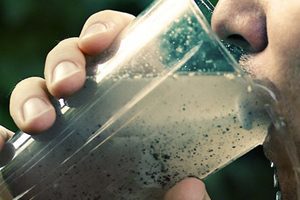
Arsenic in Water With Type 2 Diabetes. According to an Associated Press (AP) report, recent analysis of government data has linked low-level arsenic exposure, possibly from drinking water, with Type 2 diabetes. Although the study’s limitations warrant additional research public water systems were moving toward meeting tougher U.S. arsenic standards during the study’s data collection period, […]

Arsenic in Water With Type 2 Diabetes. According to an Associated Press (AP) report, recent analysis of government data has linked low-level arsenic exposure, possibly from drinking water, with Type 2 diabetes. Although the study’s limitations warrant additional research public water systems were moving toward meeting tougher U.S. arsenic standards during the study’s data collection period, analysis of 788 adults’ medical tests found a nearly four-fold increase of diabetes in people with low arsenic concentrations in their urine versus those with even lower levels.
Previous research, which took place outside the United States, has long linked high arsenic levels in drinking water with diabetes. What is new in this emerging research is the link at low levels. The new findings appear in Wednesday’s Journal of the American Medical Association (JAMA). “The good news is, this is preventable,” said lead author Dr. Ana Navas-Acien of Johns Hopkins Bloomberg School of Public Health in Baltimore. Navas-Acien added that new safe drinking water standards may be needed if the findings are duplicated in future studies; the group has already begun a new study involving 4,000 people.
Arsenic occurs naturally in the environment and is combined with other elements such as oxygen, chlorine, and sulfur to form inorganic arsenic compounds. Higher-than-average levels generally occur in workplaces, near or in hazardous waste sites, and in areas with high levels naturally occurring in soil, rocks, and water. Arsenic can enter drinking water naturally when minerals dissolve, but it is also an industrial pollutant derived from both from coal burning and copper smelting. Utilities use filtration systems to remove arsenic from drinking water. Also, seafood naturally contains nontoxic organic arsenic; therefore, the researchers adjusted their analysis for signs of seafood intake and found that people with Type 2 diabetes had a 26 percent higher incidence of inorganic arsenic levels than those people who did not have Type 2 diabetes.
It has long been known that exposure to high levels of arsenic can cause death and exposure to low levels for extended periods of time can cause a discoloration of the skin and the appearance of small corns or warts. Although it remains unclear as to how arsenic could contribute to diabetes, prior studies found impaired insulin secretion in pancreas cells occurs when those cells are treated with an arsenic compound.
What also remains unclear are the policy implications of these new finding, said Molly Kile, an environmental health research scientist at the Harvard School of Public Health. Kile wrote an accompanying editorial in the journal JAMA. “Urinary arsenic reflects exposures from all routes—air, water, and food—which makes it difficult to track the actual source of arsenic exposure, let alone use the results from this study to establish drinking water standards,” Kile said. Kile said the findings raise a sort of “chicken-and-egg problem,” since it’s unknown whether diabetes changes the way people metabolize arsenic. It is also possible that people with diabetes actually excrete more arsenic.
In 2001, the United States lowered arsenic standards for public water systems to 10 parts per billion because of arsenic’s known cancer risks. Compliance with that mandate was required by 2006, which was years after the study data were collected in 2003 and 2004.
The personal injury attorneys at Parker Waichman LLP offer free, no-obligation case evaluations. For more information, fill out our online contact form or call 1-800-YOURLAWYER (1-800-968-7529).


